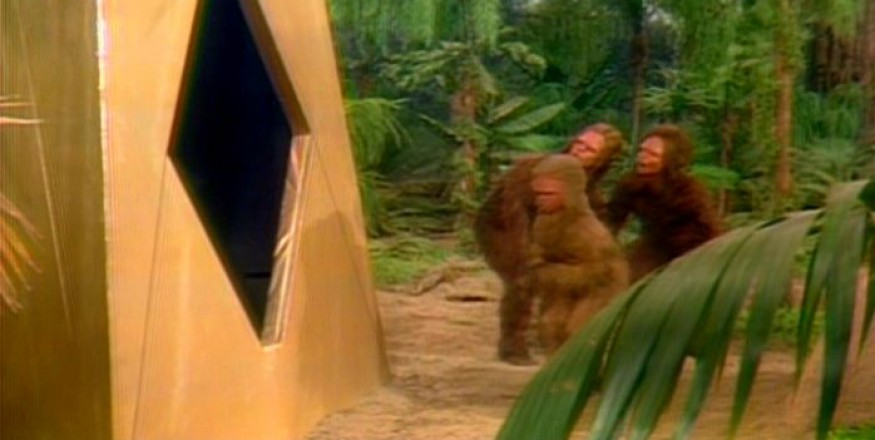Week after week, running like a trolley car along the tracks of her clearly preprogrammed orbit, Pesquisador swept pat the Martian orbit and on toward Jupiter. Unlike all the ships traversing the skies or seas of Earth, she required not even the most minute touch on the controls. Her course was fixed by the laws of gravity; there were no uncharted shoals, no dangerous reefs on which she would run aground. Nor was there the slightest danger of collision with another ship; for there was no ship--at least of Terrestrial origin---anywhere between her and the infinitely distant stars.368Please respect copyright.PENANACiWRiBnyVB
Yet the space which she was now entering was far from empty. Ahead lay a no-man's land threaded by the paths of more than a million asteroids---less than ten thousand of which had ever had their orbits precisely determined by astronomers. Only four were over 100 miles in diameter; the vast majority were merely giant boulders, trundling aimlessly through space.
Nothing could be done about them; though even the smallest could totally destroy the ship if it slammed into it at tens of thousands of miles per hour, the chance of this happening was, well, astronomical.
On the average, there was only one asteroid in a volume a million miles on one side; that Pesquisador should also happen to occupy this same point, and at the same time, was the very least of her crew's worries.
On Day 86 they were due to make their closest approach to any known asteroid. It had no name---only the number 8805--and was a 50-yard-diameter rock that had been detected by the Lunar Observatory in 2007 and immediately forgotten except by the patient computers of the Viagens Interplenetarias.
When Dhala came on duty, H.A.L. promptly reminded him of the forthcoming encounter---not that he was likely to have forgotten the only scheduled in-flight event of the whole voyage. The track of the asteroid against the stars, and its coordinates at the moment of closest approach, had already been printed out on the display screens. Listed also were the observations to be made or attempted; they were going to be very busy when 8805 flashed past them only 900 miles away, at a relative speed of 80,000 m.p.h.
When Dhala asked H.A.L. for the telescopic display, a sparsely sprinkled star field flashed onto the screen. There was nothing that looked like an asteroid; all the images, even under the highest magnification, were dimensionless points of light.
"Give me the target reticule," asked Dhala. Immediately four faint, narrow lines appeared, bracketing a tiny and undistinguished star. He stared at it for many minutes, wondering if H.A.L. could possibly be mistaken; then he saw that the pinpoint of light was moving, with barely perceptible slowness, against the background of the stars. It might still be half a million miles away---but its movement proved that, as cosmic distances went, it was almost close enough to be touched.
When Quarlos joined him on the control deck 6 hours later, 8805 was hundreds of times more brilliant, and was moving so swiftly against its background that there was no doubt as to its identity. And it was no longer a point of light; it had begun to show a clearly visible disk.
They stared at that passing pebble in the sky with the emotions of sailors on a long sea voyage, skirting a coast upon which they cannot land. Though they were perfectly well aware that 8805 was just a lifeless, airless ball of rock, this knowledge barely affected their feelings. It was the only solid matter they would meet this side of Jupiter---still two hundred million miles away!368Please respect copyright.PENANAzvzZpYQ9lP
Through the high-powered telescope, they could see that the asteroid was very irregular, and turning slowly end over end. Sometimes it looked like a flattened sphere, sometimes it resembled a roughly shaped block; its rotation period was just over 2 minutes. There were mottled patches of light and shade distributed apparently at random over its surface, and often it sparkled like a distant window as planes or outcroppings of crystalline material flashed in the sun.
It was racing past them at almost 30 miles per second; they had only a few frantic minutes in which to observe it closely. The automatic cameras took dozens of photographs, the navigation radar's returning echoes were carefully recorded for future analysis---and there was just time for one impact probe.
The probe carried no instruments, as none could survive a collision at such cosmic speeds. It was merely a small slug of metal, shot out from Pesquisador on a course that should intersect that of the asteroid.368Please respect copyright.PENANAyaDYZdB79E
As the seconds before impact ticked away, Dhala and Quarlos waited with mounting tension. The equipment, elementary though it was in principle, taxed the accuracy of their equipment to the limits. They were aiming at a 100-foot-diameter target, from a distance of thousands of miles.
Against the darkened portion of the asteroid there was a sudden, dazzling explosion of light. The tiny slug had impacted at meteoric speed; in a fraction of a second all its energy had been transformed into heat. One puff of incandescent gas had briefly erupted into space; aboard Pesquisador, the cameras were recording the rapidly fading spectral lines. Back on Earth, experts would analyze them, looking for the telltale signatures of glowing atoms. And so, for the first time, the composition of an asteroid's crust would be determined.368Please respect copyright.PENANATSYCSufKB6
Within one hour, 8805 was a dwindling star, showing no trace of a disk. When Dhala next came on watch it had vanished totally.
They were alone again; they would remain alone, until the outermost of Jupiter's moons came swimming up toward them, 90 days from now.
ns 15.158.61.51da2





















